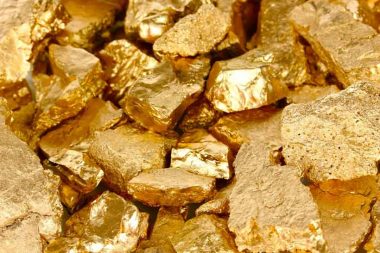 Jacqueline Gerson knows very well how “artisanal gold mining” sounds to people who haven’t heard the phrase before.
Jacqueline Gerson knows very well how “artisanal gold mining” sounds to people who haven’t heard the phrase before.
“I think of it like the Wild West days in the United States,” said Gerson, the assistant professor of Earth and environmental sciences in Michigan State University’s College of Natural Science.“During the gold rush here, people were using mercury to extract gold. That’s exactly what’s happening now in these artisanal and small-scale gold mines.”
Artisanal and small-scale gold mining, supplies about 20% of the gold bought and sold around the world, said Jacqueline.
Assistant Professor Jacqueline Gerson of Michigan State University is working with artisanal and small-scale gold mining communities in Senegal and other countries to better understand and reduce the mining’s health risks.
In the context of mining, “artisanal” is all about the word’s denotation, rather than its charming connotations that we tend to associate with things like cheese, chocolate and coffee.
“Artisanal means the miners are using very rudimentary approaches, without modern technology,” Gerson said. “And they’re small-scale, meaning small groups of people, but in a given community, there can be hundreds or thousands of people mining.”
Miners dig up ore and sediment containing gold, then add mercury to help extract the precious metal. They then burn the mercury off-often in huts where miners and their families live-leaving the gold behind.
The process is cheap, easy and accessible. That’s why miners used it over a century ago during the gold rush in the U.S.
In 2013, more than 140 countries signed a United Nations treaty called the Minamata Convention on Mercury, which went into effect in 2017 to curb mercury emissions.
Artisanal and small-scale miners sell their gold to dealers who introduce it into the global supply, where it’s indistinguishable from gold mined in accordance with the Minamata Convention. That means, if you own gold jewelry, some of that metal probably came from artisanal gold mines.
Making mining safer.
Researchers have been working to try and help these miners keep their livelihoods while reducing its associated health risks. Most new approaches, however, focus on replacing mercury with techniques or technologies that are more expensive or harder to use than the toxic metal.
The researchers’ approach started with talking with miners in Senegal to identify emission-reducing opportunities that would stick. Using what they learned, the team developed an approach based on two pillars.
The instructors also shared information about the second pillar, devices known as retorts. Retorts are metal enclosures that allow miners to burn the mercury off from gold without releasing vapors into the atmosphere.
Local metal workers built the retorts for the study using readily available materials and a design provided by the research team that also incorporated tweaks from the miners.
Based on the project’s success in Senegal, Gerson believes the approach could be extended to mining operations in other countries to further curb emissions. But she stressed that it has to be the entire approach, not just the solutions they found in Senegal.
“Miners have to be involved from the beginning to identify specific solutions that will work in their unique physical and social environments,” Gerson said.
Artisanal mining in Senegal is different from artisanal mining in Peru, for example. So the specific techniques that worked in Senegal may not work in Peru, but the approach of working with miners and their neighbors to find trustworthy solutions will translate.
“That’s a theme in my work,” Gerson said. “We have to collaborate with the people who are living and working in these places if we’re going to be successful.” This knowledge could help create policies and practices to better protect miners, their neighbors and nearby communities.
